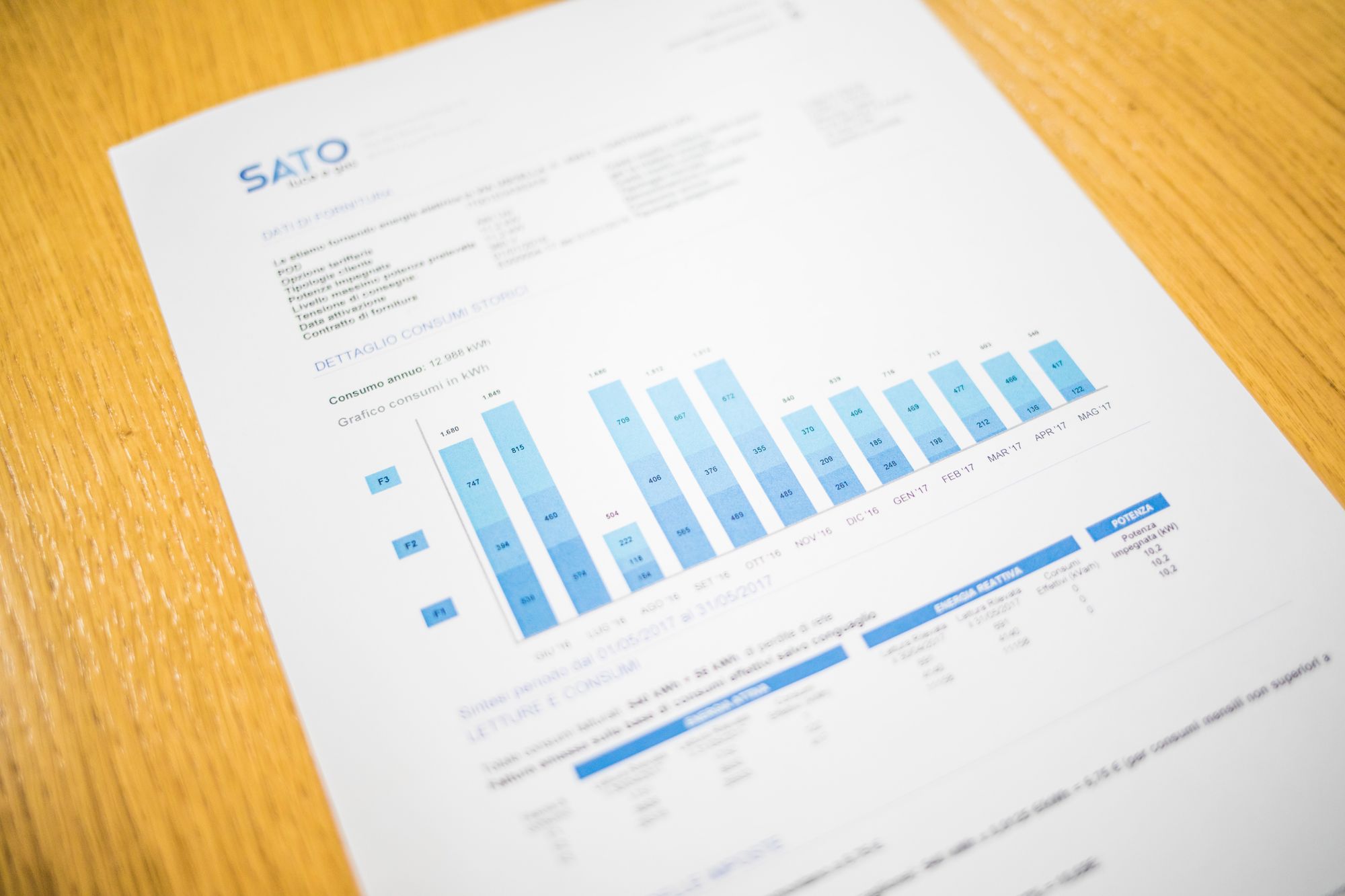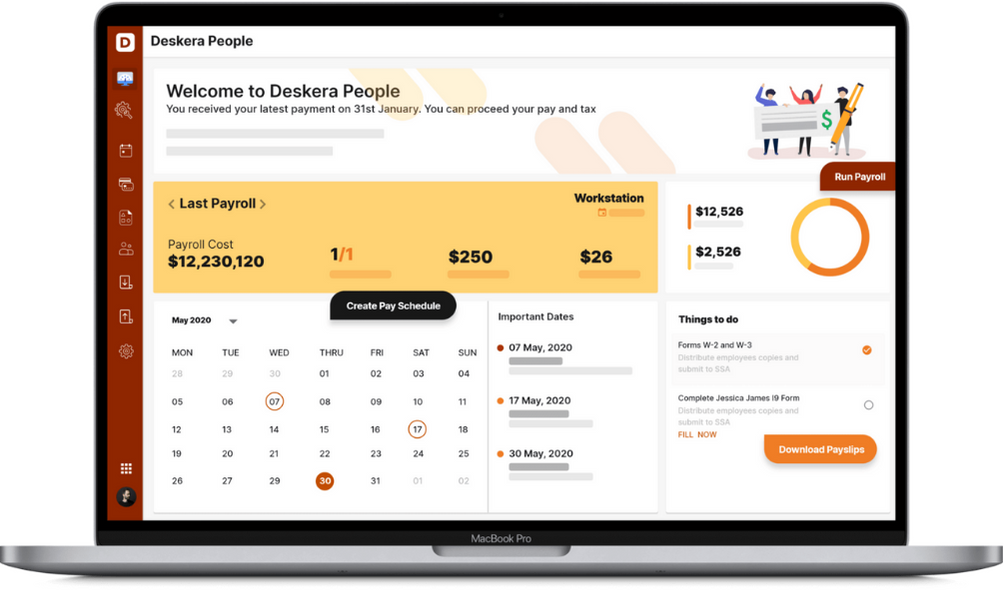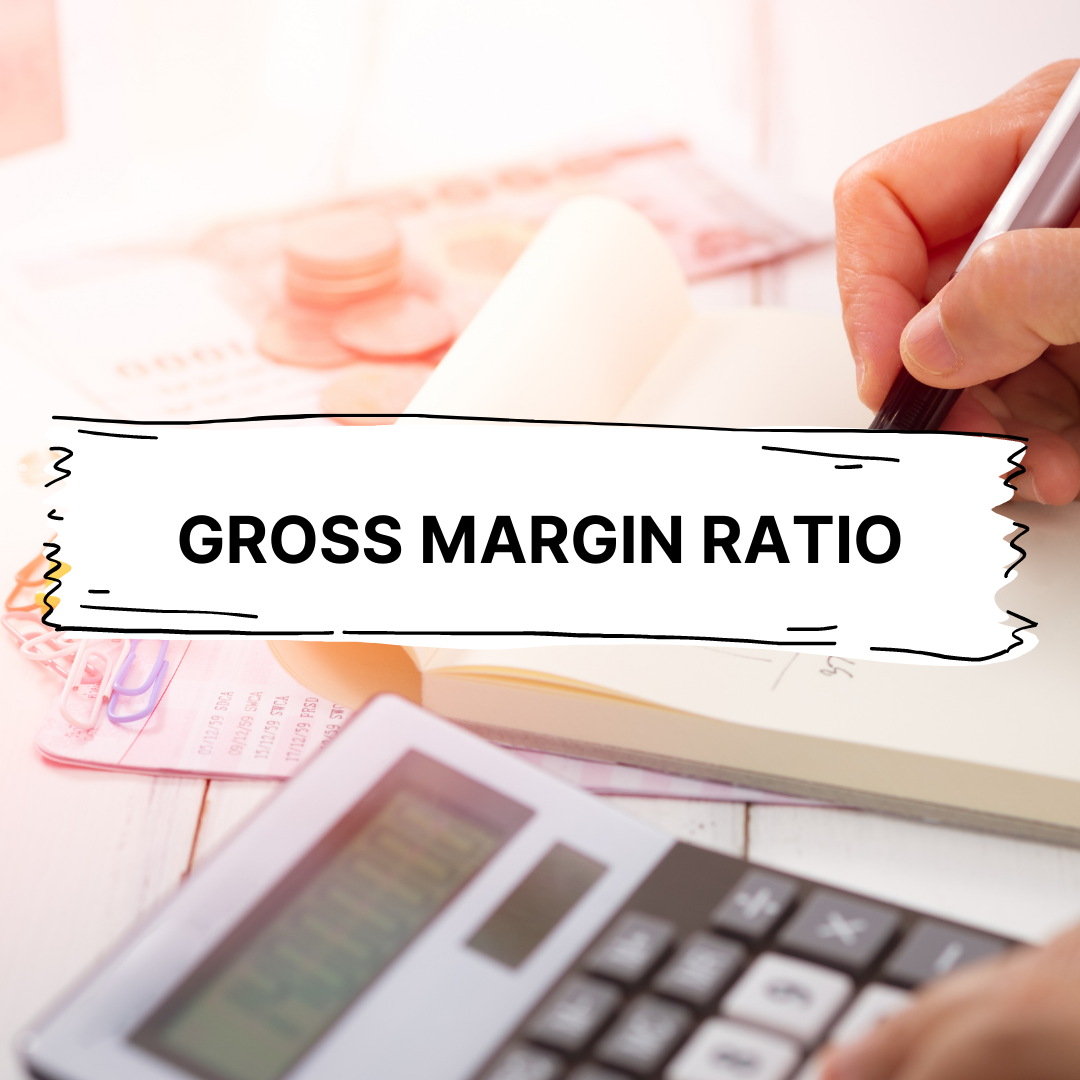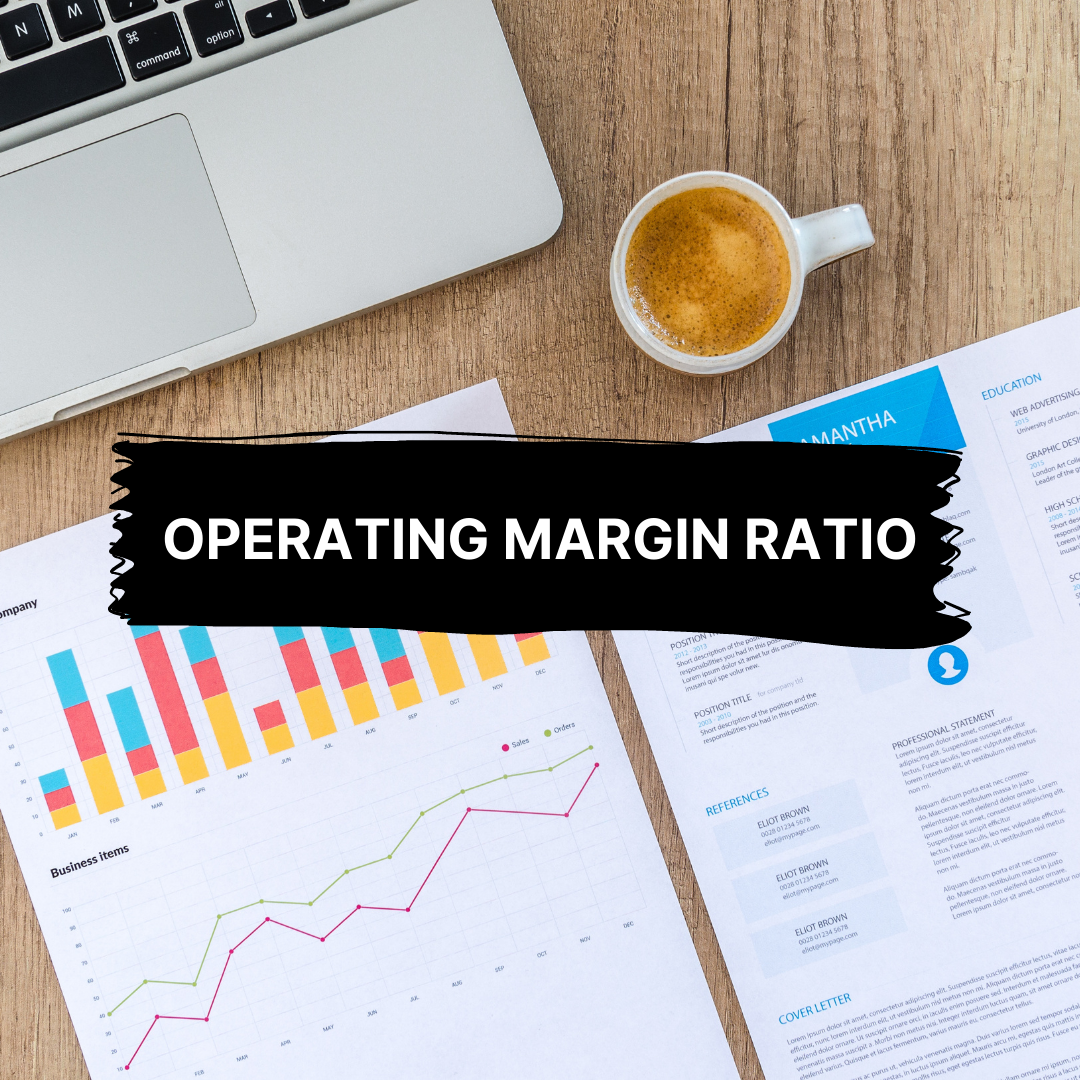If you own or run a business, do you pay close attention to your operating margin? This ratio calculates a business' operating income or profit as a percentage of its ongoing net sales. This number is crucial because it shows potential investors how profitable a company is and provides an easy way to compare companies in the same industry or across competitors.

In this article, we'll go over why calculating operating margin is crucial, what factors to take into account, and how to do it on an income statement with examples. Following are the topics covered:
- What is the Operating Margin?
- How to Calculate the Operating Margin
- Operating Margin vs Gross Margin and Net Margin
- Importance of Operating Margin
- Limitations of the Operating Margin
- Key takeaways
What is the Operating Margin?
When a company's cost of goods sold (COGS) and operational expenses are deducted from the revenue produced during the period, the remaining profits are represented by the operating margin.
The operational margin makes a connection between a company's operating income (also known as "EBIT," or earnings before interest and taxes) and revenue in order to calculate the profits made before covering non-operating costs. It is computed by dividing operating income by net sales for a business. It displays the amount of operating income produced for every dollar of sales revenue.
In general, higher ratios are preferable, showing that the business is effective in its operations and adept at converting sales into profits.
Operating margin is a valuable tool for comparing the profitability of various businesses within the same industry and tracking profitability trends over time because it is expressed as a percentage of sales rather than an absolute dollar amount. In order to decide whether to lend money or invest, creditors and investors also use it. The "common size" metric, which is generated from operating income, is operating margin.
Operating margin is distinct from net profit margin, which is the bottom line amount, because net profit deducts for costs like interest and taxes in addition to non-core company activities like profits or losses on investments and debt revaluations.
Operating margin is a stronger indicator of the health of the underlying firm because it is significantly more constant over the course of reporting periods than net profit margin.
Understanding Operating Margin
The operating margin of a business, also known as return on sales (ROS), is a reliable indicator of how well it is run and how effectively it produces profits from sales. Investors and lenders pay special attention to it because it illustrates the portion of revenues that can be used to cover non-operating expenses like paying interest.
Operating margins that are highly erratic are a key sign of business risk. The same is true for determining whether a company's performance has improved by examining its historical operating margins. Better managerial controls, more effective resource usage, better pricing and more successful marketing can all increase operating profit.
The operational margin can be defined as the ratio of a company's profits from its main business to its total revenues. Investors can then determine if a company derives the majority of its revenue from its main businesses or from other sources, like investment.
Operating Margin Formula
One of the widely used metrics in the financial sector is operating margin, which quantifies how much profit a firm or company makes on each dollar of revenue or sales after accounting for and paying for variable production costs like raw materials and labor but before accounting for and paying for taxes or interest.
EBIT is another name for this. When presented as a percentage, the operating margin is typically understood as the percentage of each dollar of sales.
Divide operating income by net sales, then multiply the result by 100 to get operating margin. The equation is:
Operating Margin = Operating Income / Revenue (sales) x 100
The numerator of an operating margin calculation is a company's earnings before interest and taxes (EBIT).
Revenue less cost of goods sold (COGS) and the normal selling, general, and administrative costs of running a firm, excluding interest and taxes, is how operating earnings, also known as EBIT, are determined. There are various line items that make up both operating profit and overall revenue. Total revenue consists of:
- Investment interest
- Income from sales
- Income from services
Operating profit is the total revenue minus these expenses:
- Cost of goods sold
- Amortization
- Depreciation
- Administrative costs
- Rent
- Payroll
- Utilities
- Any additional overhead costs
Since tax and loan interest costs are not factored into the calculation of operational profit, businesses also refer to it as Earnings before Taxes and Interest, or EBIT. For this reason, operating profit may also be referred to as EBIT.
How to Calculate the Operating Margin
The operational margin is the ratio, stated as a percentage, between a company's operating profit (also known as EBIT) and sales. The operating profit margin, often known as "operating margin," provides an answer to the following query: "How much of the revenue generated trickles down to operating income (EBIT)?"
A corporation can determine its operating income by deducting operating expenses (OpEx) from its gross profit, which has already been decreased by the cost of its sold goods during the time. Having stated that, operating income is the money that is left over after all costs associated with core activities have been deducted (i.e. inclusive of both COGS and OpEx).
Particularly when performing a comparative study, it is crucial to have precise data that has been created using consistent accounting techniques. Businesses can compute operating margin over any time period, including monthly, quarterly, or yearly. Businesses frequently determine the operating margin for particular business divisions and product categories.
They can compare the profitability of various corporate divisions thanks to this.
Examples
Example 1
Let's say a business recorded $200 million in net sales revenue overall on its 2020 annual income statement. Operating income for the year was $40 million after deducting $160 million in COGS and operating costs. It has a 20% operating margin ($40 million/$200 million multiplied by 100).
Example 2
If a business had $3 million in sales, $500,000 in COGS, and $300,000 in administrative costs, for instance, its earnings would be $3 million - ($500,000 + $300,000) = $2200,000. In such case, its operating margin would be $2200,000 / $3 million, or 73%.
The company's operating margin would increase to 80% if it could bargain better pricing with its suppliers, bringing down its COGS to $300,000.
Example 3
The operating margin of XYZ Company 36% is calculated by taking its operating profit, which is $45 billion, and dividing it by its revenue, which is $125 billion, then multiplying the result by 100.
Operating profit
The amount of profit realized after deducting operating costs—the operating expenses (OPEX), such as salaries and raw materials, and the cost of goods sold (COGS), such as the rent of a production facility—as well as amortization and depreciation, is an accounting figure sometimes referred to as operating income.
- The term "selling, general, and administrative expenses" (SG&A) refers to all costs associated with a company's sales as well as general and administrative costs.
- For a manufacturer, COGS refers to expenses that are directly related to producing items, such as the price of raw materials, the wages of manufacturing employees, and freight costs.
- Cost of sales, which includes the direct costs of supplying the services provided to clients, is the analogous metric in the service sector. In addition to these expenditures, operating expenses also include depreciation and amortization of assets used for core activities, as well as administrative and sales commissions.
- By definition, non-operating income and expenses, which are produced by non-operating activities and one-time profits and losses, are not included in operational income.
For instance, investment income, one-time payments, gains on the sale of equipment, intangible asset impairment, and financing charges are not included in operational income. Another significant deduction from operating income is income tax.
Operating income may be the same as earnings before interest and taxes if a business has no non-operating operations (EBIT). The following calculations can be used to determine operating income:
- Operating Income = Net Sales Revenue - COGS - Operating Expenses
- Operating Income = Net Income + Interest Expense + Taxes
Revenue
The total amount of a company's sales of goods and services is sometimes referred to as sales or net sales. The sum of all product and service sales is known as sales revenue. On an income statement, businesses typically either disclose gross or net sales revenue.
Depending on the system of accounting used by the organization, gross sales revenue comprises both cash and credit sales. Gross sales less returns and any post-sale allowances and discounts, like early-payment discounts, equals net sales revenue. Operating income and operating margin are calculated from net sales revenue as a starting point.
Sales and revenue are frequently used in the same sentence. However, revenue is a broader word under Generally Accepted Accounting Principles (GAAP), a set of accounting regulations released by the Financial Accounting Standards Board (FASB), which encompasses sources of income outside than sales.
What Can You Learn From Operating Margin?
You may determine a company's operating margin by looking at how effectively its primary business generates profit. That's because it solely accounts for COGS and operational costs, leaving out non-operating expenses like taxes and interest payments.
Operating margin is helpful for comparing businesses since it represents profitability as a percentage rather than in monetary terms.
Example:
It can be used to contrast a business with rivals that generate more or less in terms of sales revenue and operational income. When comparing operating margins, company size is taken out of the equation and it is revealed how much profit each business makes on each dollar of sales revenue.
How to Interpret an Operating Margin? High or Low?
Since there are industry-specific factors that might affect operating margin, it is optimal for the companies chosen to operate in the same (or nearby) industries for comparisons of operating margins to be useful.
Since the company is making more money from its operations to cover its variable costs and fixed costs, larger operating margins are generally preferable than lower margins.
High operational margins in comparison to the industry average or margins that are rising over time show how effective management is at boosting operating profitability.
On the other side, low operating margins and deteriorating margins could be a symptom of underlying flaws in the company's future trajectory brought on by unsuccessful expansion plans and ineffective capital allocation.
Operating Margin: A Business Guide
To maximize your income, you can decide how to distribute your company's operational resources among various revenue estimates using your operating margin. Your operating margin can also be used to determine which costs have the most financial impact on your business.
Your operating margin, however, interests more people than just you.
- Your investors also pay close attention to it since it reveals how much money you have been spending to generate each dollar of sales and whether your profit margin is expanding or contracting.
- Analysts use your operating margin as a gauge for your ability to pay both equity and debt investors as well as how much is left over for tax payments.
- Analysts also use it to gauge how valuable your stock is, with greater values generally being preferable. A helpful benchmark for comparing your business to rivals in the same industry is your operating margin. Your likelihood of being a top performer in your industry increases with your margin.
Operating margins vary greatly from industry to industry, making it less practical to compare businesses across industries. Because operating margin directly reflects many of the variable costs that managers can control but is unaffected by costs they cannot, such interest or taxes, it gives managers insight into the effectiveness of their decisions.
A corporation is at risk if its operating margin fluctuates significantly over time. It can also show whether a strong quarter is an outlier or an indication of an upward trend.
When an organization's operating margin gradually declines over time, it means that expenditures and expenses are increasing faster than sales, which is a sign of an unhealthy organization.
Operating Margin vs Gross Margin and Net Margin
The operational and non-operating line items on the income statement are distinguished by the operating margin line item. Although they are distinct, operating margin and gross margin both show how effectively a company makes money. The way the two measurements represent the impact of costs and expenses on an income statement is different.
Taxes and interest costs, which represent the cost of funding a corporation, are not included in operating margin on financial statements. As a result, it assists a business in determining if it can afford to incur more interest costs, such as those associated with financing for growth or capital expenditures, for example.
- To compare two businesses in the same industry with comparable business models and yearly sales, potential investors may find operating margin to be a more relevant indicator.
- The company with the greater operating margin appears to be more efficient. Gross margin, often known as gross profit margin, is a percentage that only accounts for expenses directly connected to the manufacture and supply of a company's products or services. Otherwise put,
- Earnings before interest and taxes (EBIT) are defined as excluding non-operating income and expenses, also known as items that are "below the line."
- Non-operating activities and one-time profits/(losses) like interest on marketable securities, capital gains from asset sales, asset impairment from things like inventory, and income taxes could be included in the non-operating segment.
- Since the net profit margin includes all operating expenses as well as non-operating expenses, the operating margin can be thought of as falling somewhere in the middle between the gross profit margin and the net profit margin. The gross profit margin only takes into account direct costs, such as COGS.
- The operating margin is unaffected by the implications of some optional financing arrangements, accounting principles, and tax structures, making the indicator more useful for peer comparisons.
Operating margin typically falls short of gross profit margin since it does not account for the effects of lower spending (notably administrative costs, SG&A, amortization and depreciation). The statistic is more helpful to managers seeking to decide on production-related variable costs like salaries, rent, and equipment leases.
What Distinctions Exist Between Operating Margin and Other Profit Margin Measures?
All operating costs are included in operating margin, while non-operating costs are not. The most thorough and conservative way to analyze profitability is net profit margin, which accounts for all expenses related to a sale. Contrarily, gross margin only considers the costs of goods sold (COGS) and disregards factors like overhead, fixed costs, interest charges, and taxes.
How can Businesses Raise Net Profit Margin?
A company is said to have a competitive advantage when its operating margin is higher than the industry average, which indicates that it is more successful than other businesses with comparable operations. Although the typical margin for various industries varies greatly, organizations can generally gain a competitive edge by growing revenue or cutting costs—or both.
However, increasing sales frequently necessitates bigger expenditures, which results in higher costs. Cutting expenses too much might also have unfavorable effects, such as losing competent staff, switching to subpar materials, or suffering other quality losses. Sales may suffer if advertising funds are cut.
For many firms, expanding is the greatest course of action to lower production costs without compromising quality. Economies of scale refer to the hypothesis that bigger businesses typically have higher profits. The cost of each item is decreased in a number of ways thanks to a huge company's improved level of production. For instance, wholesalers frequently provide discounts on bulk purchases of raw materials.
Is Operating Margin the Same as Profit Margin?
One of the three commonly used profit ratio measurements is operating margin. The gross margin and net profit margin are the other two. Each of these measures offers a unique viewpoint on the operations of an organization.
The ratio of gross profit to sales revenue is called the gross margin, sometimes known as the gross margin ratio. The difference between sales revenue and COGS is gross profit, and the gross margin, which is determined by excluding just direct expenses of manufacturing, indicates how lucrative the company is. In contrast, operating margin accounts for both COGS and operating expenses.
The ratio of net income to sales revenue is known as the net profit margin. The company's profit after deducting all operational and non-operating costs, such as interest and taxes, is known as net income.
Which is preferable: a lower or higher operating margin?
The meaning of "good" varies by industry, but higher operating margins are generally preferable than lower operating margins. It's critical to evaluate businesses operating in the same sector because some industries have fundamentally greater operational expenses than others.
Operating margins might be more helpful when compared to industry benchmarks than when viewed alone. For instance, food stores and supermarkets typically have extremely thin operating margins of just a few percentage points.
To produce enough profit in dollars, they typically rely on big sales volumes. In comparison, the operating margin is typically between 12 and 17 percent in the utilities sector and the advertising industry.
What Are Some High and Low Profit Margin Industries?
Services industries frequently have high operating margins since they require fewer resources to produce than an assembly line does. Similar to this, software or gaming companies may invest early while creating certain software or game and profit greatly later by easily selling millions of copies.
Significant-end accessories and luxury goods, however, frequently have modest sales and high profit margins.
Lower operational margins are typically found in operations-intensive industries like transportation, which may have to cope with varying fuel prices, driver incentives and retention, and vehicle upkeep.
Due to unpredictable weather, huge inventories, operational expenses, the requirement for agricultural and storage space, and resource-intensive activities, agriculture-based businesses typically also have lower margins.
Automobiles also have low margins because of the fierce competition, erratic consumer demand, and significant operating costs associated with building dealership networks and logistics, all of which limit profitability and sales.
Importance of Operating Margin
Operating margin primarily demonstrates how effectively a business obtains profits from its core activity after paying for fixed and variable expenses. These gains may be reinvested in the firm or utilized to finance expansion. It is the proportion of an organization's operational earnings to its revenues.
This would imply that the operating margin of the business or organization will increase value for its shareholders while providing ongoing loans to lenders.
In comparison to a lower ratio, the corporation has less financial risk the larger its operating margin. To chart the operating margin over time, you can make a trend line graph.
Generally speaking, the operating margin should rise as sales rise as fixed costs represent a smaller portion of costs. In light of this, it is simple to determine whether the operating margin is keeping up with fluctuations in revenue.
Operating margin analysis has a number of advantages. This statistic can be used by businesses to evaluate their internal operations, gauge competitive profitability, and assist with pricing.
- Industry comparisons: A business can compare its operational effectiveness to that of others in the same sector while omitting variables like taxes that are beyond its control.
- Efficiency analysis: Examining operating margin and its constituent parts can assist a business identify areas where costs might be cut or even eliminated.
- Trend analysis: Monitoring operating margin over time enables a business to spot patterns in profitability and generate more precise estimates.
- Pricing tactics: When determining pricing, operating margin analysis might be useful.
The operational margin of a corporation is a reliable measure of its management effectiveness. In general, a well-managed business performs an excellent job of generating income while reducing costs in areas like administrative wages and rent, which are frequently significant portions of operational expenses.
It might be an indicator of a company's overall health and competitiveness if it can consistently increase operating margin.
The operational margin, expressed as a percentage, demonstrates how much profit an organization makes from each dollar of sales after deducting the direct costs associated with generating those revenues. With higher margins, more of every dollar of sales is retained as profit.
Investors should look for or consider the operating margin in addition to the gross profit margin and net profit margin when determining the profit margin since this will help them to bridge the understanding gap on how the business or company is truly performing operationally.
Uses and Relevance
A company that can turn a profit or an income rather than running at a loss sends a good message to both current creditors and future investors.
Because it excludes auxiliary activities and concentrates on the profitability of core businesses, operating margin is useful for assessing the quality of a company's earnings.
In order to assess the risk associated with lending to or investing in a business, lenders and investors consider operating margin along with other measures.
Example:
Operating margin may be taken into account by a lender as a sign of a company's ability to make loan payments on time. The ability of the business to turn a profit and pay off the additional debt that is typically created as a result of an acquisition may be evaluated by an acquirer thinking about a leveraged buyout by looking at operating margin.
Operating margin is a component of the financial modeling that investors use to assess possible returns on their investments.
Because operating profit or operating margin helps quantify how much of a company's or organization's profit was generated from its primary or core operations, it ensures profitability and effectiveness. And for this reason above all others, operating margin is one of the most important profitability ratios.
Limitations of the Operating Margin
Only businesses in the same sector, with ideally comparable business structures and annual sales, should be compared using the operating margin. Operating margins vary widely between companies across industries and business types, making it useless to compare them. An apples-to-apples comparison would not be possible.
The operating margin is frequently criticized for including non-cash costs such stock-based compensation and depreciation and amortization (D&A).
Many analysts employ a profitability measure called earnings before interest, taxes, depreciation, and amortization (EBITDA) to take the effects of financing, accounting, and tax laws out of profitability comparisons between businesses and industries (EBITDA).
The operating margins of large manufacturing enterprises and heavy industrial companies, for instance, are more comparable when depreciation is added back.
Additionally, CapEx, which can significantly affect a company's actual free cash flow (FCF), is not taken into consideration by EBIT.
Because it doesn't include non-cash costs like depreciation, EBITDA is sometimes used as a stand-in for operating cash flow. EBITDA does not, however, equate to cash flow. This is because, unlike operating cash flow, it does not account for any rise in working capital or capital expenditures required to support production and maintain a company's asset base.
Even though a business has a healthy operating margin, it may nevertheless experience cash flow issues, for instance, if it has trouble getting payment from a significant client. In truth, a lot of businesses that appeared to be prosperous have really failed because of a lack of working capital and cash flow.
How can Deskera help You?
Deskera People provides all the employee's essential information at a glance with the employee grid. With sorting options embedded in each column of the grid, it is easier to get the information you want.

In addition to a powerful HRMS, Deskera offers integrated Accounting, CRM & HR Software for driving business growth.
To learn more about Deskera and how it works, take a look at this quick demo:
Key Takeaways
- The operating margin includes two factors — operating profit and total revenue. By dividing the operating profit by the total revenue, one may determine the operating margin. Examining your income statement or evaluating expenses and profits will help you determine the operating margin.
- The operating margin shows how effectively a business can turn a profit from its primary activities.
- For business owners, keeping track of income and expenses is crucial because it enables them to see exactly where their company's funds are going. Businesses can boost their overall revenue by making wise financial decisions by determining which revenue-generating channels to pursue.
- An organization's operating margin is a measurement of its profit on each dollar of sales, before deducting interest costs or taxes and after taking into account variable manufacturing costs like labor and raw materials.
- Higher margins are preferred over lower margins, and they can be compared between businesses in the same industry but not across different ones.
Related articles













